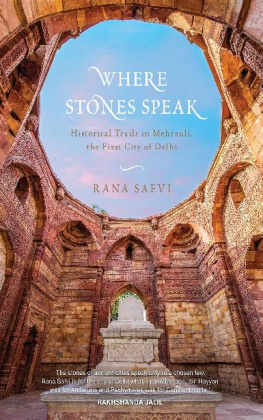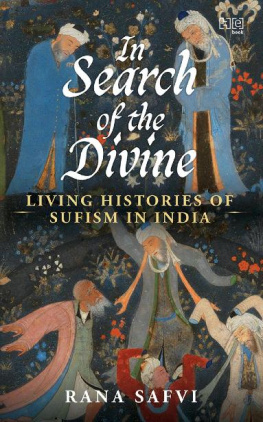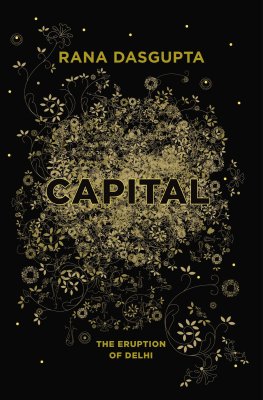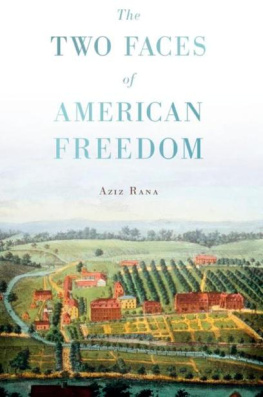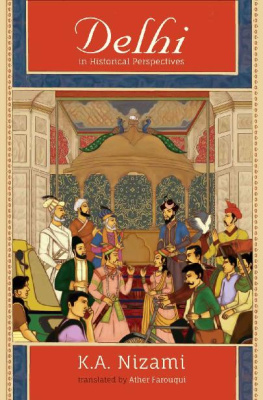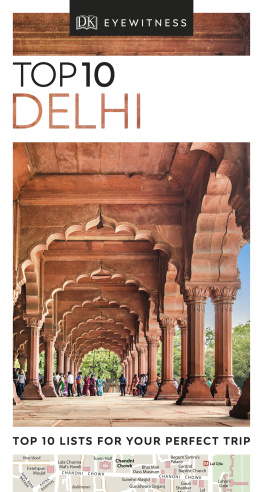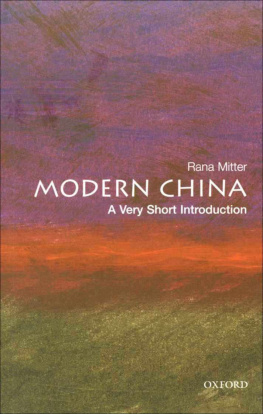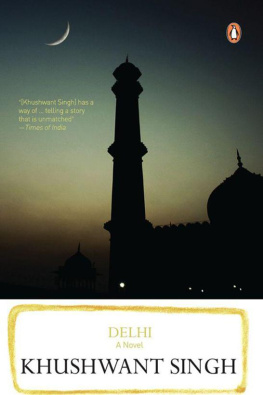Foreword
Rana Safvis book traces the story of the advent of the Turks in Indiaespecially Delhiand the resultant changes it brought about in various aspects of life. The move undoubtedly marked a generic transformation of Delhi, where the existing local cultureTomar and Chauhandisintegrated and a new idiom of architectural vocabulary and socio cultural landscape emerged. This book surveys the topography of this changed landscape and interprets the new architectural icons with the thoroughness of an expert and the imaginative warmth of a poet.
The author has been able to combine her grasp of the primary Persian sources with surface-led archaeological explorations and critical historical analysis. This has enabled her to contextualize history against the background of many historically lesser-known structures.
Who knew that the nondescript second floor on the right side of the western archway of Quwwat ul Islam mosque was a ladies mosque and it was standing on this floor that the young Raziya, daughter of Sultan Iltutmish, unfurled the banner of revolt against her stepbrother and ruling king, Sultan Ruknuddin Firoz Shah? It was here, on a Friday, after the Juma prayer, that she put on red garmentsas was the custom by the aggrieved in those daysand in an emotional speech, made a fervent appeal to the public to rescue her from her brother and his mother. The frenzied mob attacked the palace and arrested Shah Turkhan, mother of the sultan and installed Raziya as the next sultan. Later on, when Sultan Firoz returned he was defeated in a decisive battle, thus making Raziya the first lady sultan in an Islamic state. Conceptualization brings Delhis monumental remains into sharp focus and enables an inquisitive visitor to put a voice to each and every stone that slowly begins to speak to us in a conversant tone about the dim and distant past; these historic monuments wake up before our eyes and the whole drama enacts itself, adding new flesh and blood to the bare stone and mortar.
Such an exercise, apart from the primary knowledge of original sources, also requires the ability to be in constant conversation with these archaeological remains and those rare men who knew various unwritten anecdotes about the historical buildings. Their oral history, although full of oriental hyperboles and florid exaggerations, conceals a kernel of truth in its inner recesses and helps a discerning historian get an insight into the social milieu of the past.
Rana Safvi was in constant touch with these men and monuments and made journeys on foot to these historical structures to listen to their silent narratives. These interactions, I believe, have enabled her to understand and interpret these landmarks better than others. Her recollections, laced with appropriate Urdu couplets, illuminate the entire ancient landscape and transport the reader to a period when several movers and shakers of medieval India walked over the good earth of Mehrauli.
K.K. Muhammed
Regional Director (retd.), Archaeological Survey of India
The
Origin
of Delhi
The Origin of Delhi
Three things make a city Dariya, Baadal, Haakim
Kohsaron pe barf jab se pighli
Dariya tevar badal rahe hain
Since ice melted on the mountains
Rivers have changed their moods time and again
(Akhtar Hoshiyarpuri)
A layman would wonder why were the rulers, or the people of Delhi so capricious? Instead of wasting so much time, money and effort in building new cities, why didnt they just reinforce and expand the old city to meet the growing needs of the next generation? The answer to that lies in an old Hindi saying, which roughly translated means, to build a city three things are needed: dariya, baadal aur haakim (a river, rain-bearing clouds and a ruler who is willing and able). Unless these three things are in place, no city can flourish.
But if one observed Delhi on an old map, heres what one would see: to the east of this plain flowed the River Yamuna and to the west, the ridge, forming a triangle with the apex towards the north where the river met the ridge. The base was a line of low, broken hills, jutting from the ridge almost eastwards all the way to the river.
The Yamuna also flowed much closer to Old Delhi than it does now. The first four cities of Delhi were built in the rocky terrain and it is possible that tributaries of the Yamuna may have fed their daily needs for water. Firozabad, the fifth city was the first city to actually be established on the Yamuna and other cities followed suit. Today however, the River Yamuna flows at a distance from all of these as it has changed course over the years.
The original founder of Delhi probably chose the rocky Aravalli hills in Mehrauli as his headquarters, for the strategic and military advantages it offered. It was one of the reasons why Qutbuddin Aibak and some of his successors continued to live in the Lal Kot / Qila Rai Pithaura area for some years till Kaikobad moved to Kilokhari. Thus it was necessity rather than caprice on part of the rulers, which required the shifting of Delhi to either stay near the water source to accommodate a growing population, or to build a strong defence.
This led to Delhi being built several times overas many as fourteen till 1947 but the popular notionand perhaps even a romantic onestates seven times as only that many cities are still extant. The eighth city, the last one, was designed and built by Sir Edwin Lutyens.
Some of the cities are:
1. Khandavprastha / Indraprastha
This falls in the Purana Qila area built by the Pandavas in 1450 BC. But this city is still partly mythological, as no conclusive proof has been found of its existence in this particular area. In a trial excavation done in 1954-55, B.B. Lal had found shards of pottery that was in use in 1000 BC and known as painted grey ware (PGW) but these were not in sufficient quantity or found at a level that could sound convincing. The ASI again excavated this area in early 2014, but they closed it after failing to find any conclusive proof prior to fourth century AD.
2. Dhillu / Dhillika / Dilli
According to popular legends, this city was built in honour of King Dhilu / Delu in the year 50 BC.
3. Lal Kot and Qila Rai Pithaura
Stretching from Lado Sarai to Mehrauli, this is the first city for which there exists proper documentation. Founded by Raja Anangpal Tomar in 736 AD, this area was later expanded and renamed Qila Rai Pithaura after its famous ruler Raja Prithviraj Chauhan (11691191 AD).
4. Kilokhari / Kilughari / Qasr-e-Muizzi
In 1288, Sultan Kaikobad (12461266 AD), grandson of Sultan Balban, built this city near the present-day Maharani Bagh. Kai-Kubd gave up residing in the city, and, quitting the Red Palace, he built a splendid palace, and laid out a beautiful garden at Klu-garh, on the banks of the Jumna. Later on, Sultan Jalaluddin Khilji (12901296)he didnt entirely trust the people of Old Delhialso shifted here and ordered his own nobles and people in high offices to build their houses in Kilokhari. The merchants too were ordered to shift and build new markets. This was given the name of Shahr-e-Nau (New City).





